#acneremoval
Text
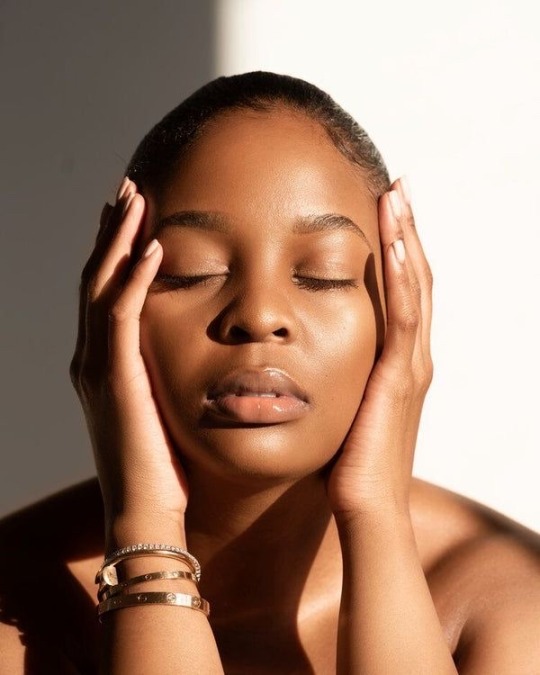
Post Acne spots form because of the overproduction of melanin that rushes to heal the area where you once had acne.
#skincare #skincareaesthetics #skincareroutine #skincareproducts #beautygoals #bbloggers #bblogrt #acnetreatment
#acne treatment#acnecommunity#acneremoval#skincare#skincare routine#beauty#dark skin#skincare tips#cozy glow#acne#cozyvibes#makeup#beautybay#cozy aesthetic#cozy#falldecor#cozymood#faith#fall season#fall home decor#cozy autumn#acnecream#acne prone skin#acnesolution#acneserum#acnemedication#cystic acne#acne care#acneproblems#acnepositivity
21 notes
·
View notes
Text
Folks, has your skin gone oily? Try only moisturising your skin for a week and a bit!! Your skin needs moisture and creates its own moisture (oil) if it does not get as much as it needs, resulting in the much feared: pimples!!!
#skincare#oily skin#pores#girlhood#girl boss gaslight gatekeep#coquette aesthetic#lana del rey#femcel#waifspo#girl help#acnecommunity#acneremoval#pimples#manic pixie dream girl#like why#we put moisturising balms that work wonders on dry and oily skin to the test#maui moisture#help help help
4 notes
·
View notes
Video
youtube
10 Amazing Home Remedies for Acne and Pimples
Acne or pimples are one of the most common skin conditions that occurs when hair follicles are clogged with oil and dead skin cells. Each hair follicle is connected to a sebaceous gland (oil glands), which produces an oily substance called sebum. Sebum can plug up hair follicles, causing the growth of a bacteria known as Propionibacterium acnes, which is normally present on the skin.
Acne can cause painful and generally occur on areas of the skin with a relatively high number of oil glands, including face, neck, back, shoulders, upper part of the chest and even arms.
If left untreated, acne can lead to long-term hyperpigmentation or scarring. There are many products on the market to treat acne but they can take time.
Here are 10 amazing home remedies for acne and pimples that you might want to try.
1. Apple Cider Vinegar
Apple cider vinegar contains several organic acids that have been shown to fight many types of bacteria and viruses.
Apple cider vinegar can help to dry up the excess oil, reduces red marks and suppress inflammation.
Mix 1 part apple cider vinegar to 3 parts water and apply on the affected skin area with a cotton ball. Leave it on for a few minutes and rinsing with cool water. Repeat this process a few times daily.
2. Honey
Honey has antibiotic properties, which help to improve acne. Apply 1 teaspoon of honey on the affected skin areas and leaving it on for 30 minutes.
3. Tea Tree Oil
Tea tree oil has the ability to fight bacteria and reduce skin inflammation. Mix 1 part tea tree oil to 9 parts water and apply on the affected skin area with a cotton swab.
4. Ice
Ice can reduce swelling, inflammation and redness of acne. Wrapping an ice cube in a paper towel and apply on the acne for a few seconds.
5. Toothpaste
Toothpaste has antibacterial properties, which play a vital role in eliminating the bacteria that cause acne. Apply a layer of white toothpaste on the acne and leave it on overnight.
6. Baking Soda
Baking soda dries out the acne and also exfoliate the skin to remove excess oil.
Mix 1 teaspoon of baking soda with a few drops of water to form a paste. Apply the paste on the acne and let it to dry for a few minutes, then rinsing with warm water. Do this a few times a day.
7. Witch Hazel
Witch hazel has anti-inflammatory and antibacterial properties.
Applying witch hazel to the skin can reduce inflammation and fight bacteria.
Soak 1 tablespoon witch hazel bark and 1 cup water for 30 minutes, then boil the mixture for 10 minutes and let it cool. Apply the mixture on the affected skin area with a cotton ball 1 to 2 times per day.
8. Green Tea
Flavonoids and tannins in green tea are known to fight inflammation and kill bacteria. Steep green tea in boiling water for about 3 to 4 minutes and let it cool. Apply the tea on the acne with a cotton ball. Leave it on for a few minutes, then rinsing with cool water and pat dry.
9. Aloe Vera
The anti-inflammatory and antibacterial properties in aloe vera can help to reduce redness and skin irritation. Apply a layer of aloe vera gel on the affected skin area and leave it on for about 10 to 15 minutes.
10. Aspirin
Aspirin can dry up acne and reduce the swelling due to accumulated pus. Form a paste by crushing the aspirin tablet and mix with a few drops of water. Apply the paste on the acne and let it dry.
Final Thoughts
These home remedies may not work for everyone, but they just might be worth a try.
After you have gotten rid of acne, it’s important to make changes in your skin care routine to prevent breakouts from returning.
#youtube#acne#pimples#pimple#acnetreatment#acnescars#acneremoval#acneproneskin#acnescarshomeremedies#skincare#skin#skincareroutine#skincaretips#skins#homeremedies#homeremedy
3 notes
·
View notes
Text
What makes Centella Asiatica such a hot skincare ingredient?
Centella Asiatica belongs to the genus Centella in the umbelliferous family, also known as gotu kola or Indian pennywort. Centella Asiatica has the function of clearing heat and detoxifying, clearing swelling and dehumidifying. Centella Asiatica was used as a traditional medicine to treat injuries of beating and skin diseases for thousands of years. How is it used in skin care products? Why Centella Asiatica is such a popular skin care ingredient? Let's explore together.
In recent years, scientists found that Centella Asiatica Extract can stimulate the proliferation of skin fibroblasts and regulate the disordered proliferation of fibers. It also promotes scar repair, reduces pigmentation, promotes protein regeneration, and restores skin elasticity and shine. At the same time, it also has antioxidant, anti-aging, anti-inflammatory magic effect.These characteristics laid the foundation for it to become a hot ingredient in the skin care field.
The star ingredient of antioxidants
Centella Asiatica contains triterpenoids, which are known to have antioxidant properties. Its antioxidant properties inhibit free radical activity and help protect the skin from free radical damage. Free radicals are unstable molecules that are produced by a variety of factors, including pollution, ultraviolet radiation and cigarette smoke. When free radicals attack the skin, they can cause wrinkles, age spots and other signs of aging. Centella Asiatica is rich in antioxidants such as flavonoids, triterpenes, phenolic acids and Centella Asiatica glycosides, which help neutralize free radicals and protect skin from damage. At the same time, it can reduce the production of dark spots, improve the skin blood circulation, renew the skin cell regeneration, and brighten the skin.
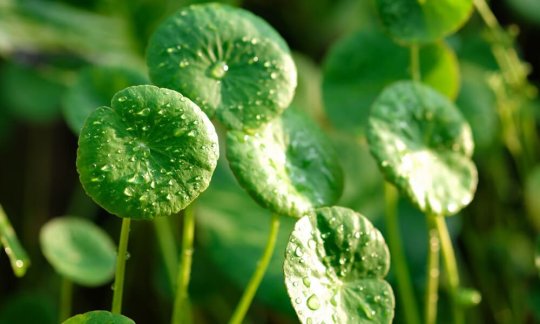
Powerful anti-inflammatory soothing repair action
Centella Asiatica is known for its anti-inflammatory, soothing and repairing properties. Inflammation is the body's natural response to injury or infection, but chronic inflammation can cause damage to the skin and lead to premature aging. Inflammation is caused by a variety of factors, such as pollution, ultraviolet radiation and stress. When the skin becomes inflamed, it becomes red, swollen and painful. Triterpene compounds found in Centella Asiatica extract have been shown to have anti-inflammatory effects on the skin. These compounds reduce inflammation and redness, soothing and repairing skin. These properties make Centella Asiatica extract an excellent ingredient in skin care products for people with sensitive skin or acne skin.

Excellent choice against early aging
Centella Asiatica promotes collagen synthesis and mucoglycan secretion, both of which make it an excellent ingredient in anti-aging skin care products. Collagen is a protein that gives skin its structure and elasticity. As we age, the production of natural collagen in our skin slows down and collagen levels decline, which can lead to wrinkles and sagging skin. Centella Asiatica has been found to stimulate collagen synthesis, helping to improve skin firmness and elasticity, and adjusting the overall texture and tone of the skin. The secretion of mucosaccharide can promote skin hydration and increase skin elasticity, enhance the vitality of the underlying cells of the skin, maintain skin elasticity and firmness, and smooth the fine wrinkles of the face.

A powerful moisturizer for the skin
Centella Asiatica has a moisturizing effect, which improves skin hydration. Water is necessary to keep your skin healthy, and keeping it moist is essential to keep it healthy. When skin is dry, it becomes itchy, flaky and dull. Centella Asiatica contains compounds called saponins that help increase the production of hyaluronic acid, a molecule necessary for skin hydration. When skin is hydrated enough, fine lines and wrinkles are smoothed out, leaving skin looking fuller and younger.
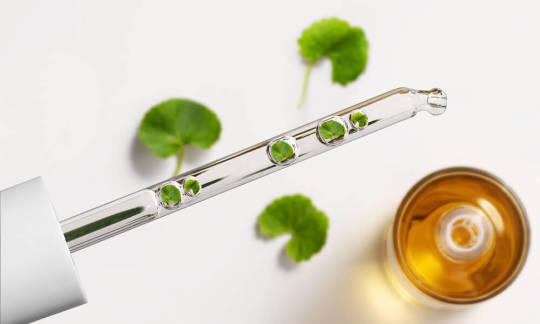
What skin type is suitable for skin care products containing Centella Asiatica?
Centella Asiatica is a powerful skincare ingredient that offers a range of benefits for the skin. This ingredient can be used in combination with all skin types, especially the following three skin types.
Acne skin: often burst acne or stubborn acne mark skin type, can be used with Centella Asiatica ingredients for scar to remove acne mark, promote wound healing.

What skin type is suitable for skin care products containing Centella Asiatica?
Centella Asiatica is a powerful skincare ingredient that offers a range of benefits for the skin. This ingredient can be used in combination with all skin types, especially the following three skin types.
Acne skin: often burst acne or stubborn acne mark skin type, can be used with Centella Asiatica ingredients for scar to remove acne mark, promote wound healing.
Sensitive red skin: sensitive red skin, dry and itchy, large pores. Using products containing Centella Asiatica can improve skin redness, improve sensitivity and stimulate skin cell regeneration.
25-35 years old anti-aging, anti-oxidation crowd: Centella Asiatica against oxidative resistance to early aging effect is very good. It can protect the skin, so that the aging stratum corneum can be removed, and help the skin metabolism. It also meets the nutrient requirements of the skin, ensuring that the skin looks younger and more radiant.

The market trend of Centella Asiatica ingredient skincare
As a super star in the field of mild acne removal and repair skin, Centella Asiatica has been sought after by major brands. It can be seen as the main ingredient in popular products of many brands such as La Roche-Posay, Dr. Jart+, Innisfree, COSRX, SkinCeuticals, Purito,Avene, etc. It is popular with consumers and many beauty bloggers for its gentle stability. It is worth mentioning that Centella asiatica has many perfect partner ingredients, such as Panthenol, Madecassoside, Bija oil, Hazel extract, Hyaluronic Acid, etc.

Other
What does Proxylane do for skin?
Could bakuchiol be the next star skin care ingredient?
Could rare Fullerene will comeback as a hot ingredient in the skincare industry?
Is snail secretion filtrate safe for skin?
Could black caster oil be the next star hair care ingredient?
Is chamomile good and safe for baby skin?
Is Benzoyl Peroxide really good for acne-prone skin?
2 notes
·
View notes
Text
Top 10 Beauty Hacks For Womens
To make your eyes pop, curl your lashes and apply a coat of mascara. Use white eyeliner on your lower waterline to make your eyes appear bigger and brighter. Keep your eyebrows looking groomed by using a clear mascara wand to brush them into place. Use a setting spray to keep your makeup in place all day long. And lastly, always remember to remove your makeup before bed to prevent breakouts and keep your skin looking healthy. With these top 10 beauty hacks for Womens, you can achieve a flawless look without spending a fortune or taking up too much time in your busy schedule.

#beauttiful girls#beauty#beauties#pretty girls#health and wellness#acnecream#acneremover#acneremoval
2 notes
·
View notes
Text
#acne#acnetreatment#acné#acneproblems#acnetips#acnefree#acneskincare#acnecommunity#acnefighter#acneproneskin#acnepositivity#acnejourney#acnehelp#acneskin#acneawarenessmonth#acneprone#acnesolution#acneserum#acnecream#acneremoval#acnetratamento#acnes#acnefacial#acnehormonal#acnespecialist#acnescars#acnepositive#acnemarks#acnemask#acneproducts
0 notes
Text
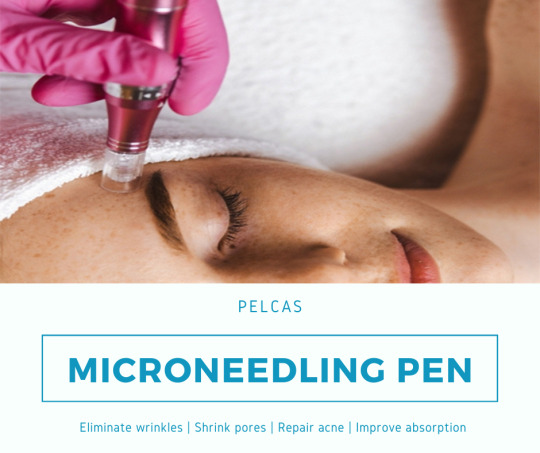
Get ready to put your best face forward and turn heads with your newfound confidence!
#beauty#beauty secrets#flawlessskin#skincare#antiaging#antiwrinkle#microneedle#microneedling treatment#dermapen#acneremoval#acne
0 notes
Text

🌸 Are you looking for the best acne treatment in Chennai? Look no further! Dr Youth Clinic's result-driven treatments can help you get clearer skin. Hurry up and visit our clinic at Anna Nagar East, Chennai to get started!
🌸Achieve a flawless complexion with our acne treatments! Say goodbye to blemishes and hello to healthy, glowing skin.🚫
For Booking:
📞 +91 9043302224
🌍 https://www.dryouthclinic.co.in/
📍 JP Anupam Tower, No.126, 1st Floor, D Block, Anna Nagar East, Chennai, Tamil Nadu - 600 102.
#AcneTreatmentChennai#AcneFree#ClearSkin#acnetreatments#skincare#acne#acnetreatment#acnescars#acnetips#DrYouthClinic#acneproblems#acneskincare#acneproneskin#acneremoval#acnefree#acneskin#skincaretips#acnesolution#acnescarring#acnecure#acnecommunity#acnefacial#acneprone#acnecare#annanagareast#healthyskin#clearskin#acnehelp#acneproblem#acnepositivity
0 notes
Text
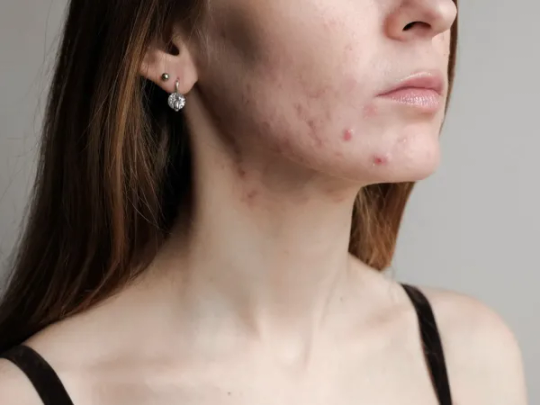
BEST FOODS AND HERBS TO CLEAR HORMONAL ACNE NOW!
#naturalhealth#alternativemedicine#naturalremedies#nutritional needs#herbalsupplements#herbalremedies#hormonalacne#acneremoval#acnecommunity
0 notes
Text

Salicylic acid - Helps to exfoliate the skin, clean out the pores, fights inflammation, balance oil production, and fight acne bacteria
#skincare #beauty #skincareroutine #quotes #skincaretips #makeup #fashion #style
#acne treatment#skincare routine#beauty#acnecommunity#acne#skincare#makeup#skincare tips#dark skin#beautybay#acne care#acnetips#acnemedication#acneskincare#acnefree#acneremoval#acnesolution#acnepositivity#acneproblems#skincare cosmetics#skincarethread#skincarecollection#skincare trends#skincream#skin treatment#skin tone#brown skin#skintips#skintexture#skintransformation
2 notes
·
View notes
Video
youtube
How to Remove Blackheads Permanently
Blackheads can be an annoying and persistent skin problem, but fortunately, there are ways to remove them permanently. One effective method is to use topical treatments containing Retin-A, salicylic acid, or benzoyl peroxide, which work to unclog pores and prevent future blackheads from forming. Another option is to undergo a chemical peel or microdermabrasion procedure, which removes the top layer of dead skin cells and unclogs pores, resulting in a clearer complexion. However, it's important to maintain good skin hygiene and avoid squeezing or picking at blackheads, as this can cause irritation and scarring. With proper care and treatment, blackheads can be removed permanently for a smoother, healthier-looking complexion.
#youtube#shorts#short#shortvideo#blackheads#blackhead#acne#acnetreatment#acneremoval#pimple#pimples#pimplestreatment#skincare#skin#skinproblems#blackheadremoval
0 notes
Text
HOW TO GET RID OF ACNE SCARS NATURALLY ?
🎯 Did you know that acne scars affect many of us, most often appearing on the face, chest, and back? A recent study reveals that 80% of individuals between 11 and 30 years old face acne, and among them, 20% develop acne scars. The causes are multiple, ranging from the type of acne to genetics, delayed treatment, and manipulation of acne lesions. Imbalanced collagen production during the healing process can also lead to these unwanted marks.🌱
Rosehip oil, rich in essential fatty acids, vitamin C, and antioxidants, is a valuable ally in the fight against acne scars. It has regenerating and repairing properties, which can help to reduce the appearance of these marks. A simple gesture - a few drops applied every night before going to bed - can make a difference, like the repairing oil from the French brand Skin Royal Cosmetics - https://skinroyalcosmetics.com
However, remember that each skin is unique. It is always better to test a new product on a small area of your skin to avoid any allergic reaction. Moreover, for more severe cases of acne, a consultation with a dermatologist may be necessary to explore other treatment options.
#skincare#skincare routine#beauty products#skincaretips#beauty tips#skincareproducts#acneremoval#acne#acnescars
1 note
·
View note
Text
0 notes
Text
7 ways to use Aloe vera for acne
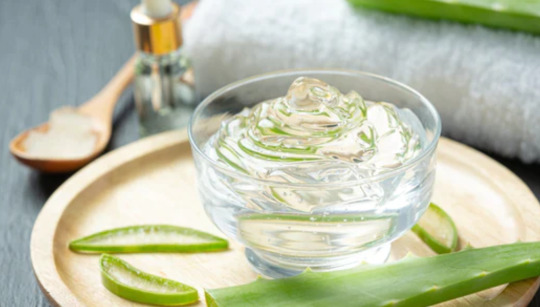
Aloe vera is a common household plant that we can see in almost every home these days. Within its stout leaves is a thick center loaded up with bountiful measures of adhesive gel.
Aloe vera has been utilized generally for various sorts of skin aggravations. The new leaves can be severed from the plant, the gel pressed out and applied straightforwardly to the skin or we can add some other ingredients for various purposes and effects.
1. Aloe Vera With coconut oil and sugar
This one truly sneaks up all of a sudden in the battle against skin breakout. Consolidate around 33% cup of coconut oil, natural sweetener, and aloe gel together and blend them well. You can store the scour in your cooler and use it day to day.
Be mindful so as to stay away from the eye zone. Apply the scour to your face and flush totally following a moment or something like that. Coconut oil is likewise an enemy of bacteria so you're getting a twofold portion of recuperating. The sugar fills in as an exfoliant to eliminate dead skin cells and open the pores to the mending force of aloe and coconut oil.
2. Aloe Vera With Lemon
Citrus natural product juices have been utilized as a skin break-out cure as well. Combining aloe gel with lemon juice creates an answer that you can apply to your face and leave on for around 10 minutes. Make certain to flush spotless, and blend the arrangement appropriately in light of the fact that a lot of lemons can disturb the skin. This cover can assist with killing microscopic organisms and purging the pores proficiently and successfully.
3. Aloe Vera With tea tree oil
You can basically several drops of tea tree oil, a characteristic enemy of bacteria with its very own long history as a skin inflammation warrior, and a tablespoon of filtered water to your aloe gel and apply it to the face. Be cautious, however, in light of the fact that you can't leave tea tree oil on your skin for over a moment or somewhere in the vicinity. Ensure you wash this mix cure off following one moment.
Read More
0 notes
Text
What Are Comedones? Unraveling the Secrets of Skin's Tiny Troublemakers
In the world of skincare, we often encounter various skin issues that can be both frustrating and perplexing. Among these common concerns are comedones, those tiny little bumps that seem to pop up on our faces at the most inconvenient times. But what exactly are comedones? And how can we effectively deal with them? In this blog, we will delve into the fascinating world of comedones, understanding their types, causes, and the best ways to keep them at bay.
Chapter 1: Comedones 101 - A Closer Look
Comedones, pronounced kuh-mee-doh-neez, are the small, flesh-colored or dark bumps that appear on the skin, particularly on the face, chest, and back. They are essentially a type of acne lesion and are classified into two main types: whiteheads and blackheads.
1.1 Whiteheads: The Sneaky Intruders
Whiteheads, also known as closed comedones, form when hair follicles become clogged with dead skin cells, oil (sebum), and bacteria. The clog remains beneath the surface of the skin, resulting in a tiny, raised bump with a white or yellowish appearance. Because the follicle is closed, the contents do not oxidize and stay concealed from the naked eye.
1.2 Blackheads: The Notorious Culprits
On the other hand, blackheads, or open comedones, occur when the clogged follicle opens and comes into contact with the air. This exposure leads to oxidation, giving the bump its characteristic black or dark appearance. Contrary to a common myth, the dark color is not due to dirt but rather melanin reacting with oxygen.
Chapter 2: What Causes Comedones?
Understanding the causes of comedones is vital to prevent their formation and recurrence. Several factors contribute to their development:
2.1 Excessive Sebum Production: When the skin produces too much sebum, it can mix with dead skin cells and block the hair follicles, creating a breeding ground for comedones.
2.2 Hormonal Changes: Fluctuations in hormone levels, such as during puberty, menstruation, or hormonal disorders, can trigger increased sebum production and, consequently, comedone formation.
2.3 Poor Skincare Habits: Failing to cleanse the skin properly or using comedogenic (pore-clogging) products can exacerbate the issue.
2.4 Diet: Certain dietary factors, such as high glycemic index foods or dairy products, have been linked to increased acne and comedone formation.
Chapter 3: Say Goodbye to Comedones - Tips for Prevention and Treatment
Fortunately, managing comedones is possible with a consistent skincare routine and some lifestyle adjustments:
3.1 Gentle Cleansing: Regularly cleanse your face with a mild, non-comedogenic cleanser to remove excess oil, dirt, and impurities.
3.2 Exfoliation: Incorporate gentle exfoliation into your routine to slough off dead skin cells and unclog pores, but be cautious not to over-exfoliate, as it can irritate the skin. PELCAS electric dermaplaning tool is used to remove dead layer and peach fuzz from the face. Dermaplaning tool painlessly exfoliates the stratum corneum to stimulate cellular turnover with little to no downtime.
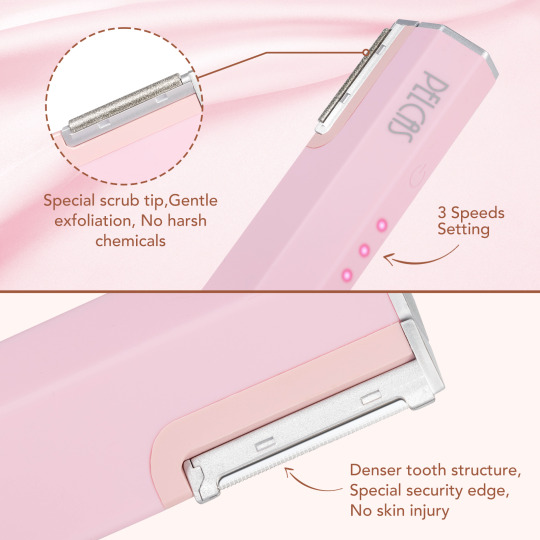
3.3 Choose Non-Comedogenic Products: Opt for skincare and makeup products labeled as non-comedogenic, meaning they are less likely to clog pores.
3.4 Topical Treatments: Over-the-counter products containing ingredients like salicylic acid or benzoyl peroxide can be effective in treating and preventing comedones.
3.5 Professional Treatments: In severe cases, consult a dermatologist who may recommend professional treatments such as chemical peels, microdermabrasion, or extractions.
Conclusion
Comedones may be pesky, but armed with knowledge and the right skincare routine, you can keep them under control. Remember, consistency and patience are key when it comes to achieving clear and healthy skin. So embrace your skincare journey, and say goodbye to those tiny troublemakers that once stood in your way of radiant beauty. Here's to a future of smoother, blemish-free skin!
0 notes